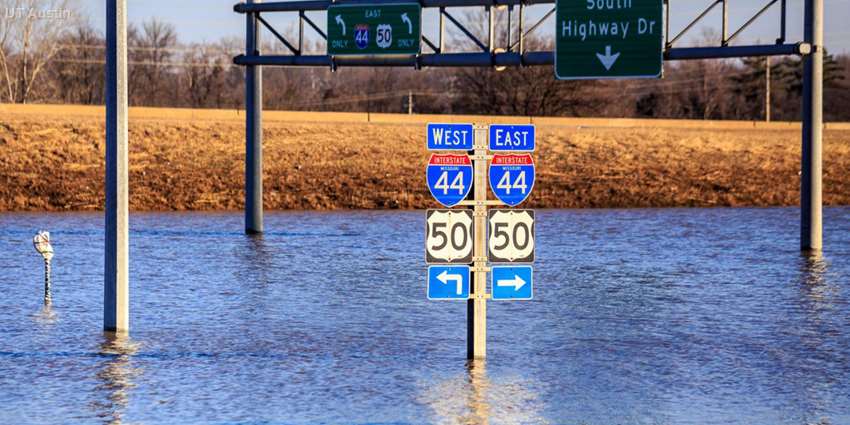The U.S. Environmental Protection Agency (EPA) has given $3.9 million to researchers in the Cockrell School of Engineering at The University of Texas at Austin to establish the Center for Infrastructure Modeling and Management. The center will develop and improve open source water infrastructure models and share tools and research findings to assist local communities and stakeholders.
“Cities around the world are struggling to manage flooding and pollution from storm water runoff, and climate change is making things even more urgent,” said EPA regional administrator Ron Curry. “UT Austin will help develop sustainable solutions to 21st-century water problems, while working with communities and coders to promote green infrastructure.”
UT Austin is leading the center in partnership with the Urban Watersheds Research Institute (UWRI), a Colorado-based nonprofit that conducts and promotes research in support of finding sustainable storm water runoff management practices. UT Austin will lead the research focus of the center, while UWRI will organize software deployment, community building and training. Scientists from Brigham Young University, Texas Tech University and North Carolina State University will contribute in both research and outreach for the center.
The center’s website will allow for community engagement with individuals interested in water infrastructure modeling. It will provide training and support services to interested users, making it a hub for those who are interested in software application or water infrastructure modeling research. The center is co-led by Dr. Ben Hodges, associate professor in the Cockrell School’s Department of Civil, Architectural and Environmental Engineering; and Dr. Charles Rowney, a research fellow in UT Austin’s Center for Water and the Environment.
“The focus in our department is on cities, water and energy and developing the tools that are so vital to monitoring and improving those areas,” Hodges said. “We are excited to build the Center for Infrastructure Modeling and Management and scale it up to solve some of the biggest problems facing our communities.”
The two lead researchers have assembled a cross disciplinary team, including domain experts for hydrologic and hydraulic modeling as well as experts in municipal infrastructure, data management and related core technologies.
“Proven real-world skills meshed with world-class research capabilities will give the center an outstanding balance of theory and practice across all technical aspects of the program,” Rowney said.
The center will start by preserving, promoting and extending two tools already developed by the EPA — the Storm Water Management Model, a water quality simulation model used throughout the world for planning, analysis and design related to storm water runoff, sewers, and other drainage systems; and EPANET, a public-domain software that models water distribution piping systems.
“This project ties into our nation’s aging infrastructure,” Hodges said. “If there are potential flooding problems, we want to understand where in the storm water drainage system chain that happens and where to fix it. On the pipe distribution network side, the big issues we have are water losses through leaks in decaying infrastructure, and contamination, such as occurred in Flint, Michigan. Part of our goal is to enhance the model’s ability to answer critical water quality questions for the water supply.”
The center will work with stakeholders to conduct research and update and enhance these tools so they can continue to be useful. Because the center will be working with crowdsourced contributions, a licensing model will also be developed.
“The EPANET and SWMM models have been pivotal technologies for decades, and the opportunity to work with the communities that have created and supported them, and to help build a new and even stronger technical foundation for the future, is truly a privilege,” Rowney said.
For more information about the EPA’s water research grants, visit epa.gov/research-grants/water-research-grants.
For more information, read the full UT news release, or contact Sandra Zaragoza, Cockrell School of Engineering, at 512.471.2129.

